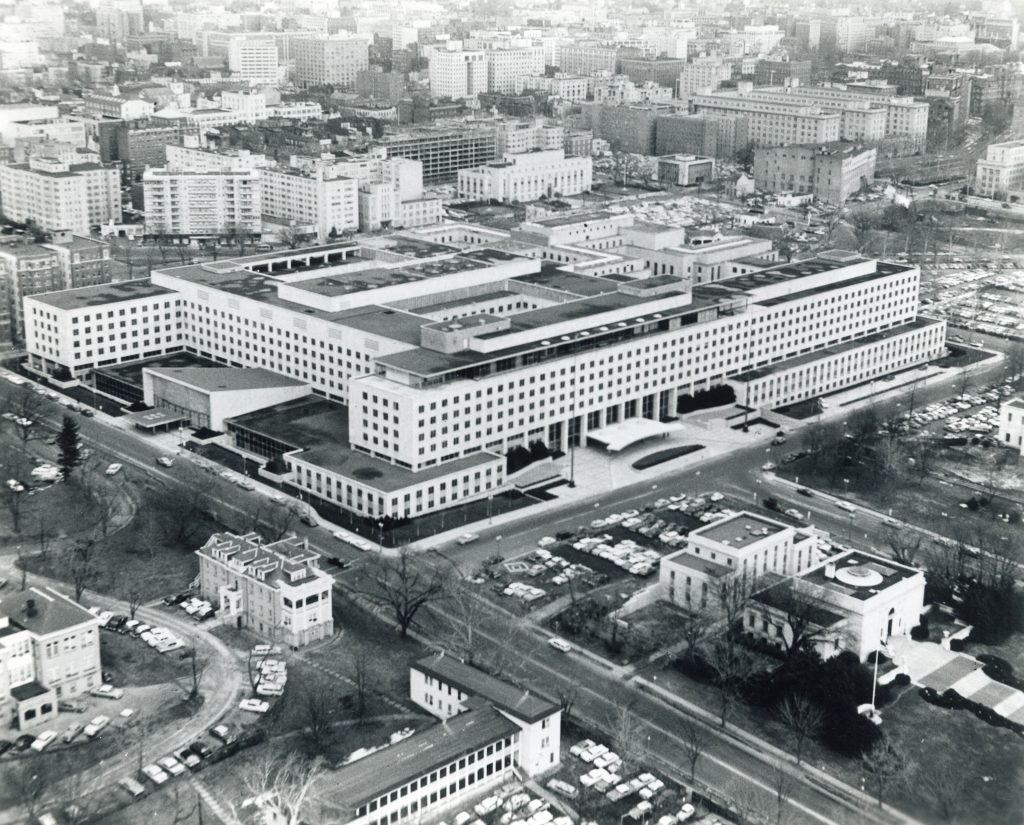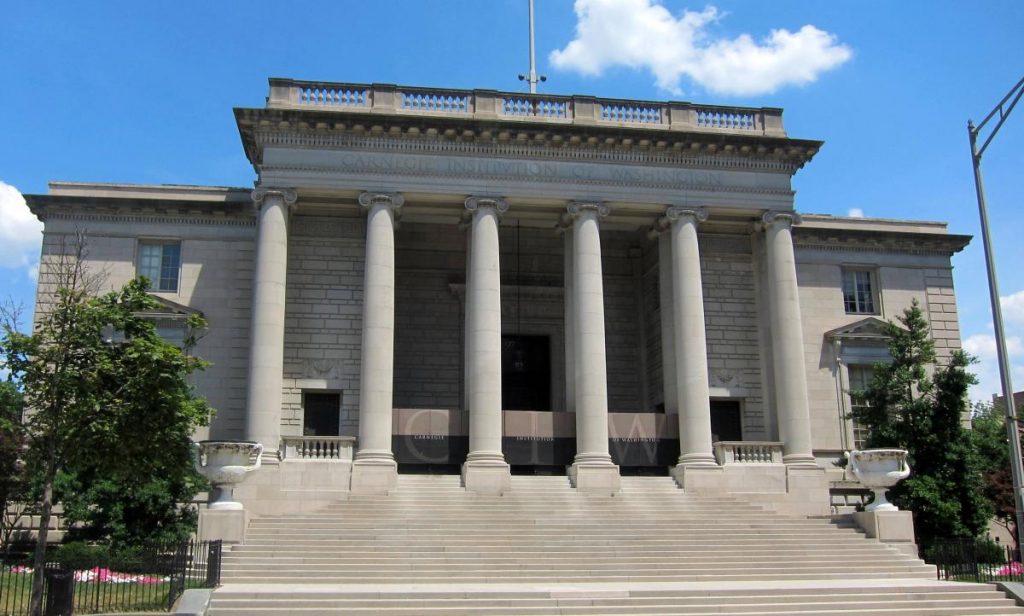Washington, DC

Washington, DC, became important in nuclear history even before the start of the Manhattan Project. Nuclear fission was first announced in DC at George Washington University. During the Fifth Washington Conference on Theoretical Physics, Niels Bohr reported the splitting of the uranium atom.
Once the Manhattan Project began, DC became the headquarters of its leader, General Leslie Groves. Groves operated the Project out of a two room office on the fifth floor of the New War Building, which is now houses the Department of State. Groves and a few staff members oversaw the activities and functions of tens of thousands working on the top-secret Manhattan Project. Washington DC was selected as headquarters by Groves shortly after he was named director of the project in late September 1942 because it allowed him to keep in contact with the War Department and other government agencies that would prove crucial to the success of the Project.
The Carnegie Institute and the NDRC
Other DC organizations contributed to the project, including the Carnegie Institute of Washington. Vannevar Bush served as both the president of the Carnegie Institute and director of the Office of Scientific Research and Development during the Manhattan Project. Bush oversaw two-thirds of the physicists in the United States, including those working on the Project.

The Institute’s many resources and facilities were solely focused on helping the war effort. This included acting as a meeting place for the National Defense Research Committee between 1940 and 1941. The NDRC would meet there to organize and coordinate the nation’s scientific resources and weapon development. Members of the NDRC included Harvard University President James B. Conant, M.I.T. President Karl Compton, Frank B. Jewett, and Richard C. Tolman among others.
Washington was also the home of many prominent Manhattan Project figures. General Groves lived in Cleveland Park, though he often spent nights away from home for his travels on the project. Several other top Manhattan Project scientists and personnel had homes in the DC area, including Edward Teller and Secretary of War Henry Stimson.
Today, Washington retains the classified Manhattan Engineer District documents at the National Archives and Records Administration in College Park.




